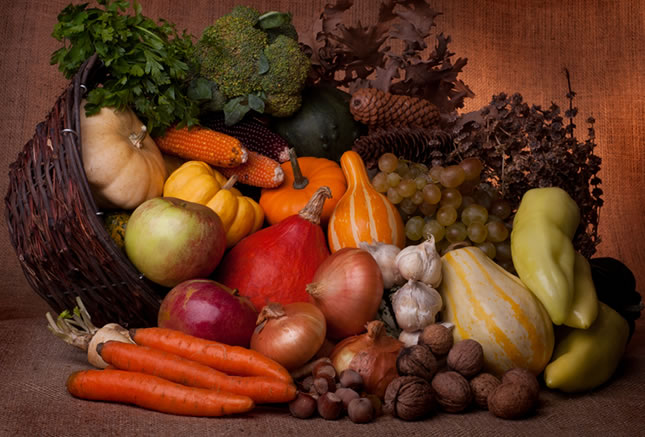
Gardening December – January
Gardening with John Treeby
The autumn colours this time round have been spectacular to say the least. The reason for the lovely autumn tree colours is because tree leaves are ra-ther like food factories, the leaves take in water from the ground and carbon dioxide from the air. Sunlight is then trapped in the leaves and is used to turn the water and carbon dioxide into oxygen and glucose. The process of turning water and carbon dioxide into oxygen and glucose is called photosynthesis. The oxygen is then released into the atmosphere from where we humble hu-mans breathe it in to survive! The glucose, a type of sugar, is used by the tree for energy and growth building.
The word photosynthesis means putting together with light and happens with the aid of a chemical called chlorophyll. It is the chlorophyll which gives leaves the green colouring. As the summer ends, the amount of light availa-ble becomes less and less, which is how the tree knows that winter is fast approaching. So as there is less sunlight and water available, the tree begins to shut down its food making processes, the tree will then live off food it has stored up during the summer months. The green colouring in the leaves will then begin to disappear, leaving small amounts of yellow and orange colours, which have been present in the leaves all along during summer, but have been masked by the bright green chlorophyll. As the chlorophyll stops flow-ing, the tree starts to produce anthocyanins another chemical which replaces the chlorophyll and is a reddish colouring. Some years are better than others for autumn leaf colours, this depends on the amount of sunlight present in the late summer months and the temperature.
The wet weather hasn’t stopped me growing plants in the poly tunnels, spring cabbages and brussel sprout plants are looking good, even the purple sprouting broccoli outside look healthy.
The hyacinth bulbs are being potted up in multipurpose compost with some vermiculite and perlite mixed in.
The garden at this time of year needs putting to bed, tidy up all the leaves, prune back all herbaceous plants. you still have time to plant bulbs such as tulips, crocus, snowdrops, mini and tall daffodils. Plant wallflowers, pansies and polyanthus in tubs and beds. In the vegetable patch plant purplesprouting broccoli, spring and summer cabbage plants, sow winter lettuce seeds such as winter density.
Back in September a young couple with a small child came into the nursery, and walked up into the field to choose a Christmas tree. I commented on how early they were but then thought actually what a good idea, as the earlier you are the better chance of choosing a well shaped tree. Their Christmas tree will be cut fresh nearer the time. I trimmed as many of the trees in early spring to keep them in shape for sale at Christmas.
By now you should have given the lawn a final cut for the season, so now it is a good idea to give the lawn a final season dressing with autumn lawn feed. Lower in nitrogen but higher in potash and phosphate the feed will strength-en the grass for the ravages of winter. Spiking a damp lawn and dressing with grit sand is also good for improving the drainage.
Christmas wreath production is now in full swing, with wire rings being clad in straw first, then green tape applied followed by conifer backing and finally the layer of berried holly on top. To finish the wreath off four or five pine cones are wired in. Hopefully the blackbirds and thrushes will keep off the holly berries until after Christmas.
Happy gardening everyone.
John
Recommended
-
Cumwhitton Open Gardens. Sunday, 5th July 2015July 30th, 2015
-
Gardening December – JanuaryJanuary 22nd, 2014
-
Gardening – September – OctoberSeptember 25th, 2013







